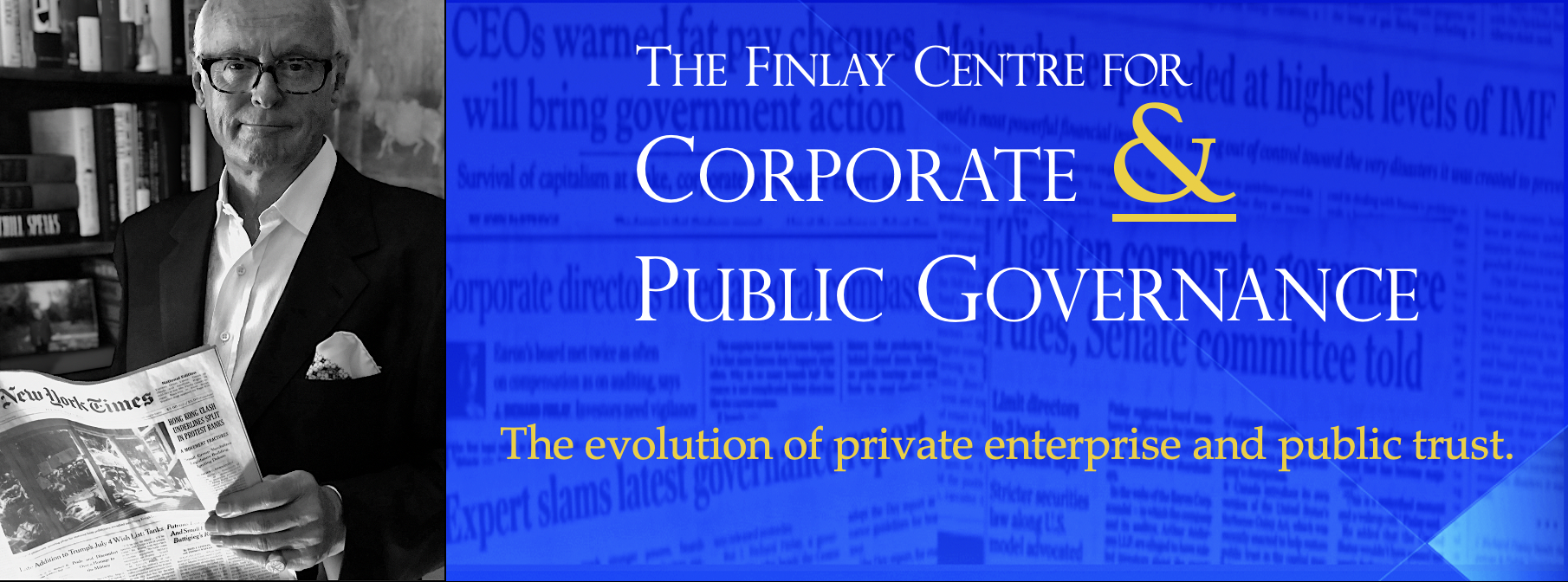Care about risk was not permitted to intrude upon the holiday from reality many boards chose to take in the years leading up to their subprime cataclysm, which is why the credit crisis of 2008 can be traced to a complete failure of corporate governance.
There is a common theme emerging from the subprime debacle as it relates to the banking industry: risk was not respected. A recent internal UBS report found that the bank’s approach to risk was “insufficiently robust” and that the oversight of investment banking “lacked effectiveness.” UBS has written off over $37 billion in connection with subprime shortcomings, more than any other bank. We noted earlier that the board of Bear Stearns, whose mishandling of risk nearly brought down the whole financial system, according to U.S. government officials, did not establish a risk committee until early 2007. It met only twice in all of that year. John Thain, who succeeded Stanley O’Neal as CEO after Merrill Lynch posted the largest losses in its history, said the risk committee there did not function. A failure to treat risk with the care it deserves was also central to Société Générale, where the bank lost more than $7 billion as a result of unauthorized trades by a mid-level employee.
After Enron and other scandals, legislators in the United States concluded that boards needed to take the “surprise factor” out of financial reporting and assume greater responsibility for the prudent supervision of their companies. Section 404 of the Sarbanes-Oxley Act of 2002 sets out the expectations of cautious boards and top management in their handling of risk and the safeguarding of financial controls. It was not long ago that officials in the Bush Administration and in the business community were seeking to ease Section 404 requirements. SOX went too far, they suggested, and it was hobbling the ability of American business to compete. The irony is that at the very same time these players were claiming SOX was too onerous, they were failing to monitor risk to such an extent that it would lead to the worst credit meltdown and largest write-downs and losses in modern corporate history. Millions of ordinary Americans, as well as stakeholders elsewhere, would be dramatically impacted by the recession-causing missteps that were taken by some of the most revered names in banking.
What is becoming more apparent is that directors and top management, all very well paid, were living in a fantasy land where they acted as though the era of soaring fees and uninterrupted success would continue indefinitely. They chose to see only what they wanted and never contemplated the prospect that reality might hold a more dismal scenario. It was a time of deafening party making where the voices of reason and prudence, if they were invited to the occasion at all, were completely drowned out in the giddy bonus-popping euphoria of the modern Gilded Age’s newest members. Care about risk was not permitted to intrude upon the holiday from reality many boards chose to take on Wall Street and elsewhere in the years leading up to the subprime cataclysm. Like the Enron-type upheavals and accounting frauds that produced the most comprehensive reforms in securities law since the 1930s, the subprime debacle reveals serious shortcomings in boardroom culture and in the way directors are supposed to work.
Simply put, the credit crisis of 2008 can be traced to a complete failure of corporate governance. Others contributed speaking (or non-speaking, as the case may be) parts to the calamity, including sleeping regulators and conflicted rating agencies. But it was the boardroom that played the leading role in this unsettling drama, where the consequences when directors fail to direct were reprised in high definition, even while the scandals of the past were fresh in their minds.
It was a time of excess at every level of the corporate enterprise -except in sound thinking and common sense in the oversight of risk, in vision for looming hazards, and in CEO compensation tied to reason instead of the unsustainable illusion of growing subprime fees. Once again, the safeguards and governance tools that could have protected these companies -and, ultimately, the health of the financial system- from what is fast becoming the worst economic crisis since the Great Depression were the Rodney Dangerfield of the modern banking boardroom.
They just didn’t get any respect.
